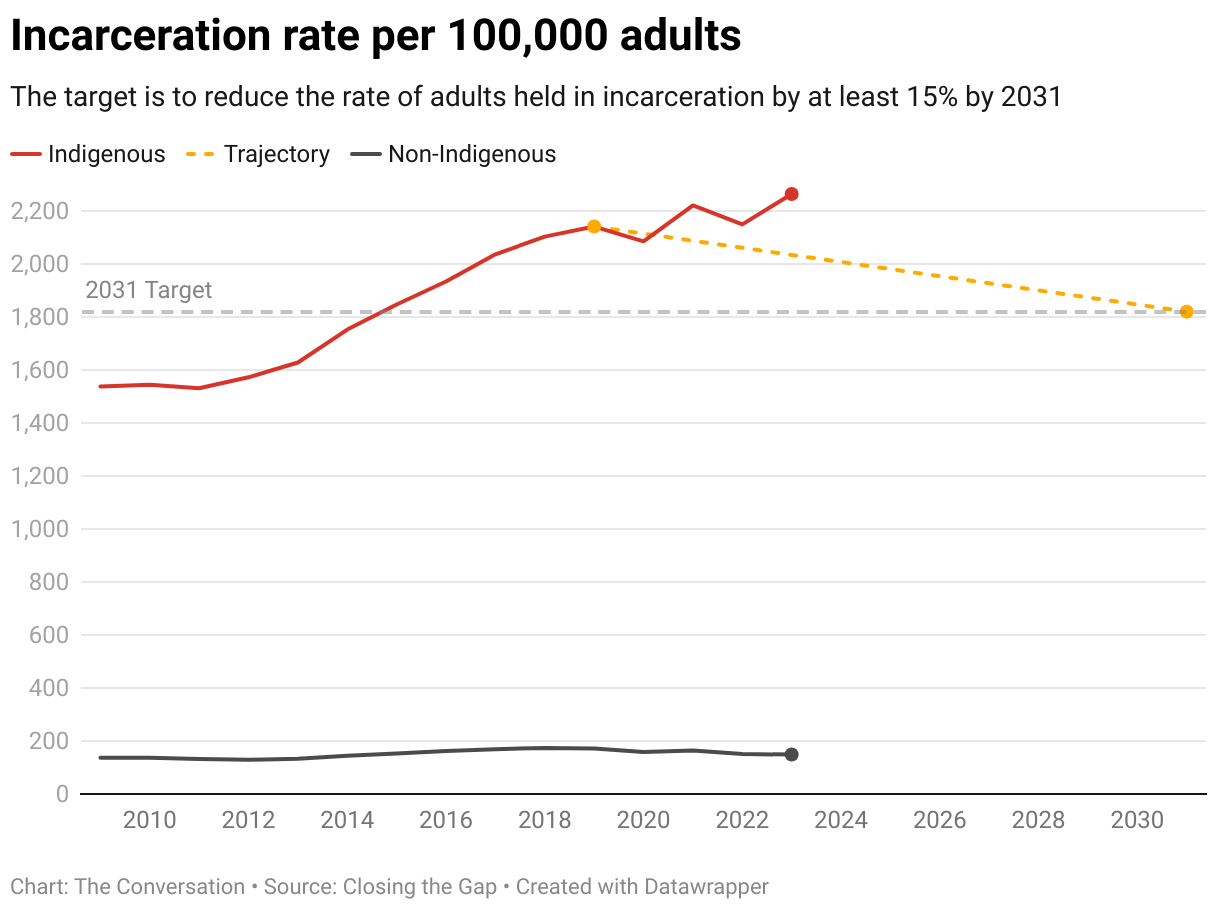Peak Prison?
Australia’s Aboriginal people are currently 17 times more likely to be in prison than other Australians. The numbers have been rising ever since more accurate record-keeping started in the 1980s.
Here are the most recent incarceration rates (2024) for some different populations around the world, measured as the number of adults in prison per 100,000 adult population.
Australia non-Aboriginal 149
Australia- Aboriginal 2,733
US- African American 901
US- All 614
United Kingdom 144
Norway 54
Indigenous rates in Australia are also much higher than other Indigenous populations around the world. Data on Indigenous incarceration rates can be hard to get and hard to standardise but countries do report on over-representation. Here are some comparisons for 2024 of how many times more likely Indigenous people are to be in prison:
Australia- Indigenous 17 times
Canada- Indigenous peoples 9 times
United States- Native American 2 times
New Zealand- Māori 7 times
Norway- Sami No identified over-representation.
Why include Norway? Because Norway has a world-leading justice system, with low recidivism (return-to-prison) rates and low crime rates. More on this in a later post.
So are we approaching Peak Prison for Aboriginal people in Australia?
The Australian federal government has established a set of national targets to improve the health and wellbeing for First Nation’s people. The Closing the Gap National Agreement 2020 includes Socioeconomic Outcome Area 10:
By 2031, reduce the rate of Aboriginal and Torres Strait Islander adults held in incarceration by at least 15%’ (from the 2019 ‘baseline.)
In the past year alone, 2023-24, the Aboriginal prison population has increased by 15%.
This graph tracks the changes in numbers since 2010.
To get close to some kind of equality with the rest of Australia, the Aboriginal prison population needs to decrease by at least 90%.
With a current target that aims for a 15% reduction every 10 years or so, it’s going to take a very long time.


